If you're new here, you may want to subscribe to my RSS feed. Thanks for visiting!
Guest Post Contributed by John Q. Public
Why communicate at all?
And you shall know the truth, and the truth shall make you free. John 8:32
For our safety, edification, and survival we need to know what is happening and what to do about it. As the plethora of prepper blogs and forums reveal, preppers have a lot to say—much of it informative, enlightening, and insightful and some of it disinformation, illogical, unmitigated drivel, and even evil. We need to screen the nuggets from the waste. Logic, critical analysis, and a well-formed conscience help us do that.
Even now, before events have hit nadir, we avoid controlled media. At best, mass media is useless; at worst, it is destructive to mind, body, and soul. What mass media provides is not news or information, but diversions, disinformation, outright lies, smut, and hasbara. Thinking people have come to depend upon the “alternative media” of the internet, but, when times get worse, the internet “kill switch” will deprive us of that source. We will be “in the dark” unless we build alternative means and networks. Better to build now than during a crisis. Amateur radio, “ham radio,” is one way to build friendships and networks now, before catastrophe peaks.
While preppers lean towards individualism, no single man, no single family can acquire all the necessary skills to thrive or even survive long term. No single man, no single family can rebuild a decent society. Very few amongst us can afford to acquire in advance all the “stuff” needed to thrive and survive. When times get worse how are the decent people to share their resources, offer their skills, communicate their needs, barter for resources that are not locally available, provide real time eyewitness news, and coordinate their good works? Want to reach a loved one when the cell system is overloaded or shut down? Use a ham radio.
Community and hence communication are essential to the good task before us. We cannot replace the diabolical command and control structure or drain the “elite’s” global cesspool unless we communicate with each other to build a decent and just society. You can be sure that our self-appointed “Masters” and their puppets and enforcers will do their worst to oppose us. We need a leg up on them.
Amateur radio is one communication tool available to us all. My intent here is only to introduce the most basic information about ham radio to the uninitiated. This brief column is not intended to provide a comprehensive compendium of technical definitions, formulae, physics, esoterica, ham slang, procedures, equipment choices, or to delineate the astonishing variety of amateur radio disciplines and niches, but only to motivate you if you are not yet a ‘ham.’
Simple foundational concepts
Amateur radio always involves some mention of wavelength and frequency, but these concepts are easy to visualize. For our purposes here, think of radio waves as ocean waves. The distance from wave peak to wave peak (or trough to trough) is “wavelength.” The longer the wavelength, the fewer waves touch the beach per minute (or second). The longer the wavelength, the lower the frequency; The shorter the wavelength, the higher the frequency—the first key concept.
In the radio spectrum, longer wavelengths (lower frequencies) “bounce” better than shorter wavelengths (higher frequencies). These longer wavelengths can be bounced off the ground, off layers of the atmosphere, or even off the moon. The ever-changing activity of the sun (day, night, sunspots) makes an enormous difference in the electrical charges in the ionosphere and so significantly affects how well the longer wavelengths “bounce,” “propagate,” how far they “go.” Shorter wavelengths (higher frequency) do not “bounce” so well and so are limited to line-of-sight propagation. Since those longer wavelengths can bounce farther than you can see, those longer wavelengths communicate farther than line-of-sight—the second key concept.
For our purposes here, we refer to the longer “bouncy” wavelengths as high frequency (HF) and the “line-of sight” shorter wavelengths as very high frequency (VHF) and ultra high frequency (UHF). Radio wavelengths are usually expressed in meters or fractions of meters. Radio frequencies are usually expressed in “per second” or “Hertz” (abbreviated “Hz”) or “millions per second” (megahertz, MHz) or even “billions per second” (gigahertz, GHz).
So, the ham radio spectrum looks like this:
HF 3 to 30 MHz
VHF 30 MHz to 300 MHz
UHF 300 MHz to 3,000 MHz (3 GHz).
All this means is that 3.750 MHz in the 80 meter HF band “bounces” better than 144.500 MHz in the 2 meter VHF band. You’ll get used to it. These concepts will quickly become second nature for you. Suffice it to say, if you want to communicate over long distances, you will want access to those “bouncy” HF bands.
Why Get Licensed?
Why? To get connected with good people of like mind. To legally operate an amateur radio now, you must be tested, licensed and you must provide an address; a private mailbox or PO Box suffices. Though such government-imposed requirements are repugnant to many, here is why you should start now—to practice important skills that will be very useful later. If you only want to talk to your buddy a few miles away, it is almost as easy to use an amateur radio as a CB radio, but to succeed in regional, transcontinental, or worldwide radio communication requires skills born of practice. If you think you can simply turn on a ham radio and send or receive real time news regionally or globally, you are sorely mistaken.
There are tools today that allow a novice to very easily use an inexpensive handheld radio to talk to other hams around the world, but this capability depends on internet digital linking. When the internet kill switch is used, there will be no more D-STAR (Digital Smart Technologies for Amateur Radio) or IRLP (Internet Radio Linking Project). When the chips are down, you will have only: (1) the short-range line-of-sight capability of VHF and UHF radio and (2) the long-range “bounce” of HF radio. While those short-range line-of-sight VHF/UHF skills are easily acquired, be sure that “DXing,” slang for making long-range contacts, requires special HF radios, more skill, more power, better antennas, and practice.
More than local news will be necessary for you to get “the big picture,” so I urge you to get your license and equipment now and start practicing. You cannot be an effective sniper with your first round and you cannot be an effective DXer with your first “QSO,” slang for “radio contact.”
Currently there are three levels of ham licenses being issued by the Federal Communications Commission (FCC): from low to high, Technician, General, and Extra. Each higher level allows more access to bandwidth, more frequencies to use. Morse code is NOT required for any class of ham license. The Technician license exam is very easy. A Technician license gives access to the relatively short-range VHF and UHF bands, but gives none of the HF access necessary for long-range communication. The General license exam is easy, only slightly more difficult than the Technician exam, and a General license allows you to legally enter the long distance world of DXing on HF. A General license is well worth the small increment of effort. The Extra licensing exam is difficult for most, but the Extra license gives access to all the frequencies legally allowed to hams.
Indeed there are many laws currently regulating ham radio usage and I urge you to learn and obey them. Practice, practice, practice… ahem… legally. Let us not review how resistance movements have used clandestine radios against the control grid.
There are two styles of study for the exams. One may simply study to pass the exam or one may study to master the information. You may choose to do both.
Gordon West has a series of books seemingly aimed at passing the exams. The first in the series is Technician Class 2010-2014.
ARRL, the American Radio Relay League, has a series of books and webpages seemingly aimed at mastering the material. The first in the series is Ham Radio License Manual Revised 2nd Edition. In far more detail than I can do here, the ARRL website provides an overview and resources for many aspects and specialty niches of ham radio, niches like “fast scan amateur TV” mentioned below. With little effort on the ARRL website’s Find A Club page, you can find a local ham club. Most clubs have training classes and members willing to be your personal ham radio mentor, in ham slang, your “Elmer.”
There are even websites dedicated to helping children obtain their licenses. For example: http://www.nc4fb.org/wordpress/kid-friendly-technician-license-self-study-program/
Some Facts, Some Gear
Radio “bands” are named by their wavelength or frequency, so because of the relationship between wavelength (abbreviated by the Greek lower case lambda, λ) and frequency (abbreviated by the Greek lower case nu, ν), the “40 meter band” is the same as the “7 MHz band.” As I hinted above, the reciprocal mathematical relationship of wavelength and frequency is quite simple: wavelength (λ) = speed of light (c)/frequency (ν).
The allocation of frequencies to bureaucratic, military, commercial, and amateur users is agreed through international treaties that are enforced by national agencies. The “band plan” for US amateurs includes access to band segments from 160 meters (1.8-2.0 MHz) to 33 centimeters (902-928 MHz), covering quite an enormous expanse of the electromagnetic spectrum. Perhaps the amateur frequency allocations are best appreciated graphically.
Ham “transceivers” both transmit and receive various radio bands. Radios range in price and functionality from utilitarian $100 handhelds to do-everything desktop behemoths costing thousands of dollars. Amplifiers and ancillary equipment increase range and functionality as they also add cost. You decide your budget. A small hand held transceiver, called “HT” for short, will commonly allow transmission and reception on VHF and UHF bands. Many ham HT’s also receive, but do not transmit HF, aviation bands, marine bands, and commercial AM and FM stations.
Opinions vary and tastes differ and there are certainly less expensive options, but I recommend the full feature Yaesu VX-8DR and ICOM ID-51A radios. Do not be perplexed or overwhelmed by product specifications as listed in brochures and reviews. The meaning of these specifications will become crystal clear as you study for your exam and use your own radio. Computer software and cables are available that allow you to program and clone the memories and setting of such radios more easily than tapping every memory and setting into the radio using the radios’ tiny buttons. RT Systems is among the most respected purveyors of such software. That Yaesu model has broader band access than that ICOM model, but does not have D-STAR or built-in GPS. The ICOM does have both D-STAR and built-in GPS (Global Positioning System), hence easy global access now using VHF/UHF (no HF), but, as I mentioned above, those global VHF/UHF capabilities are easily shutdown at the whim of “our” police state. Also, there may be circumstances where you might not want to automatically report your GPS location, so you might deactivate or not install such options. The ICOM ID-51A’s automatic GPS does allow automatic connection to nearby repeaters and reflectors (see below), a convenience, but you may choose instead to manually enter such information if needed. The line-of-sight range of these tiny 5 watt HT’s can be markedly improved, even to 50 miles, by connecting through suitable coaxial cable to a simple, inexpensive, and unobtrusive magnet mount antenna at home or on your vehicle. To help protect against EMP damage, our family keeps our HT radios in Faraday bags.
Vehicle mounted mobile transceivers markedly expand your range and bandwidth. 100-Watt mobile transceivers are common and many add HF capabilities to VHF and UHF. The very newest mobile radios, such as the touchscreen ICOM 7100, reviewed here at eham.net, include both HF and D-STAR as well as GPS capabilities if you activate it. 1,500-Watt amplifiers are optional and refined tunable antennas are available. Such units give you the best of local and worldwide digital radio now and analog radio when the internet has been killed.
For the dedicated, practiced, and affluent ham with a “ham shack,” a 1,500-Watt desktop behemoth (for example, an amplified Kenwood TS-990S ) carefully grounded and coupled to a skyful of specialized antennas is the pinnacle of amateur radio capabilities, but is far from portable. There are, of course, competing models such as the Icom IC-9100 , reviewed here at QST, a ham website and magazine, and here at eham.net. At about a third of the Kenwood TS-990S’s price, expect fewer features and slightly less capability. Your shopping philosophy may differ, but for firearms, optics, and tech gear, I believe, “Buy once, cry once.”
Whatever you choose, be sure to consider and purchase backup power sources for your radios—rechargeable batteries, solar chargers, generators, and even your vehicles’ batteries.
Ham Radio Outlet is one of the better-known suppliers of new and used equipment, but local and regional “hamfests” usually have swap meets. Experienced hams looking to upgrade their equipment often offer a variety of excellent used equipment at great prices though usually without warranties.
It is possible—and legal for licensed hams—to communicate through repeaters linked to a home computer without using any radio at all, even using a computer with a “dongle,” a device that allows access to D-STAR—but why? My purpose here is to motivate readers to have radio capability when the banksters’ police state murders the internet.
How It Works
Hams may communicate from radio to radio using “simplex,” taking turns to transmit and receive on the same frequency, but most VHF and UHF communication currently uses “duplex,” using two different frequencies “offset” for transmitting and receiving and often activated by subaudible “tones” through “repeaters.” Repeaters are powerful radios that, because of their prominent placement on moutaintops or tall buildings facilitate wider range communication than would be allowed by less powerful radios at ground level that are more easily blocked from line-of-sight by terrain or other obstructions. Small 5 watt HTs, may only have a useful range of 2-5 miles when communicating to another ground-level HT, but can have a useful range of 50 miles or more when using a 1,500-watt repeater on a mountaintop to relay the signal. HF and D-STAR communication always use simplex. D-STAR “reflectors” link by the internet to other reflectors around the world allowing 5 watt HTs to talk to people around the world. Reflectors and repeaters can be selectively linked for user-defined networks, but repeaters, reflectors, and linking will likely be unavailable when the internet is down.
Groups of hams with common interests meet on air for scheduled chats, called “nets.” You can form a “net” to meet others who share your particular interests. You can share computer files, photos, videos, and location information—locally or globally.
Privacy
Who has privacy? It is illegal to encrypt or encode amateur radio transmissions (business and government users may encrypt transmissions) and openly broadcasting allows anyone and everyone with a receiver to hear what you say. That is the diametric opposite of privacy—or is it? The amateur bands range from 1.8 to 3,000 MHz. That is a lot of territory available to “hide in plain sight.” Be sure too that there will be times when you want everyone to hear what you have to say.
I urge you to remain lawful and to abide by the millions of laws that control us, but do note this reality, presented here only as points of information, NOT encouragement—Besides the paid enforcers, there are obnoxious unpaid busybodies (as pathologically intrusive as Homeowner Association busybodies) who snoop the airwaves to detect and report even innocent regulation violations to the FCC, but it takes considerable dedication of expensive resources to DF (Direction Find) locate an offender, especially a mobile freedom fighter who illegally does not use his unique call sign and who uses brief simplex (transmit and receive on the same frequency) burst transmissions. Encrypted transmissions sound like static and technologies like spread spectrum are hard to detect and track, explaining in part why the military and the police state use such technologies themselves. Every radio has unique electrical idiosyncrasies that are an unavoidable electronic “signature.” Just like firing pin, chamber, and barrel impressions on a primer, case, or bullet “fingerprints” a firearm, your radio’s electronic signature “fingerprints” every transmission from your radio, but such identification takes sophisticated equipment, trained analysts, the time and will power to dedicate the necessary resources to catch offenders, and the authorities must have your radio in hand to match the on-air fingerprint to you and your radio. Simply because those difficulties exist, do NOT abuse your license privileges. I reiterate, remain courteous and legal.
A Last Word
A loved one is dying, you are injured, your children are starving, and your home is under attack. Who are you going to call? HOW are you going to call?
In the same vein, do you remember how the American KGB kept reporters miles away from the Branch Davidians? Imagine how different the outcome at Waco if the Branch Davidians had transmitted to the world video footage of the attacks and tortures heaped upon them by the uniformed psychopaths. Imagine if the world had seen in real time what the FBI’s own FLIR footage documented, arson and murder under color of authority revealed too late in the documentary Waco: A New Revelation—that psychopaths dismounted from an Army tank to set fire to the Davidians’ home and then machine-gunned men, women, and children as they attempted to flee the government arsonists. Yes, imagine what the world will do to such perpetrators when evidentiary video escapes the control of the gatekeepers. Document and distribute what you see. Talk to each other, my friends.
Nuremberg 2—Punish ALL the guilty; leave the innocent alone. Help it happen.

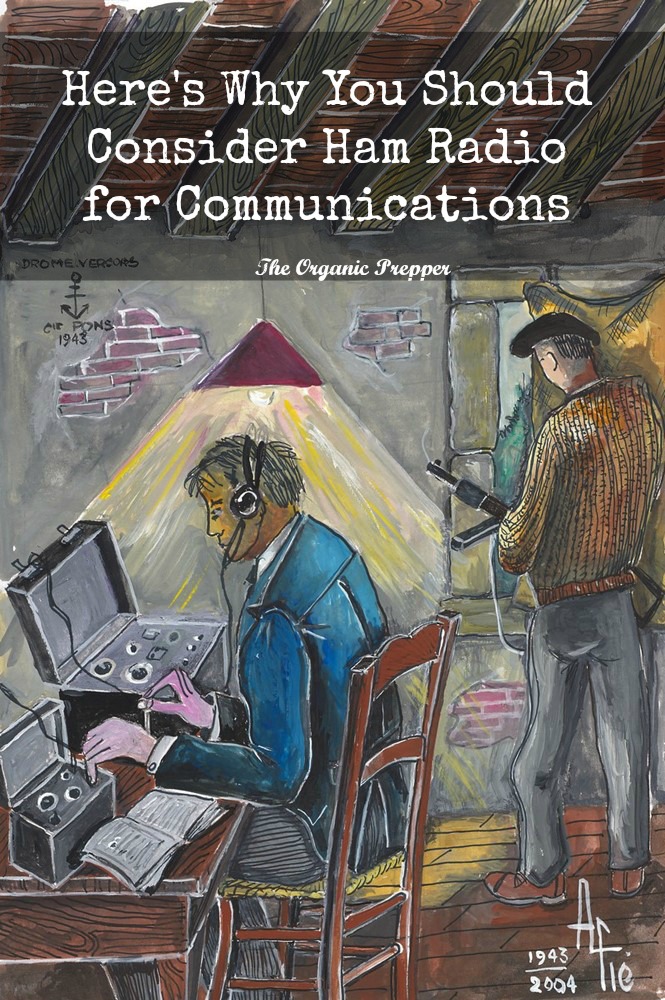
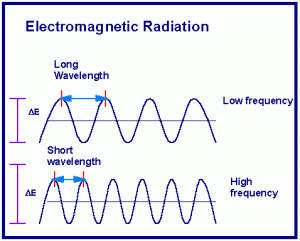
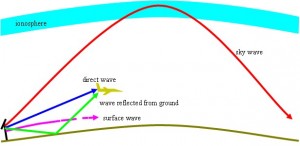
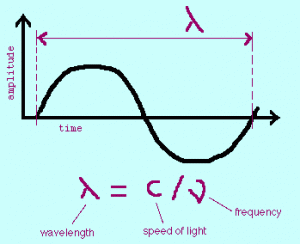
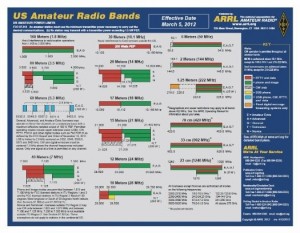
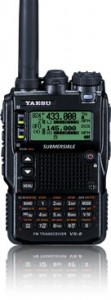
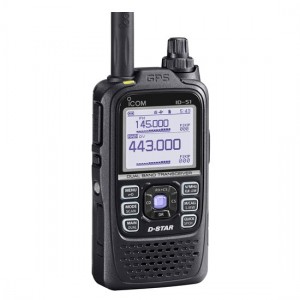
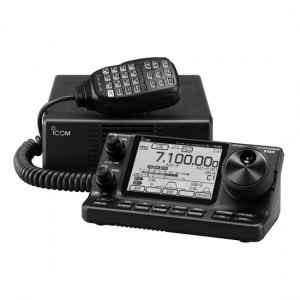
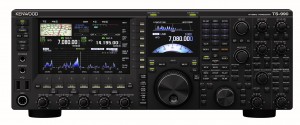
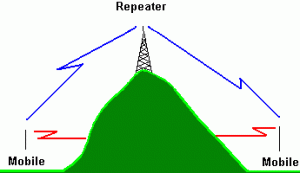
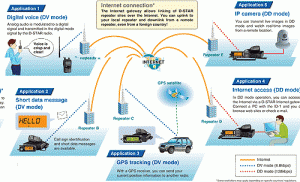
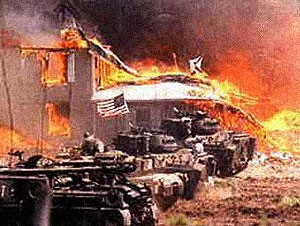














36 Responses
“A Technician license gives access to the relatively short-range VHF and UHF bands, but gives none of the HF access necessary for long-range communication.” I beg to differ, in the HF range Tech’s have CW priveleges on 80, 40,15 and 10 meter bands. Techs also have RTTY, data, and phone on 10 and 6 meters. Morse code is no longer a requirement, but failure to learn CW VERY VERY VERY greatly limits usability of Ham Radio.
If you don’t want to learn code, stay with the crappy 11 meter CB band. It’s much cheaper and easier to use.
BTW, I am a licensed Ham.
Rhumstruck is correct on a fine point. I should have said, “A Technician license gives access to the relatively short-range VHF and UHF bands, but gives ALMOST none of the HF access necessary for long-range VOICE communication.” Look at the graphic chart of the band plan, enlarge it, and, compared to the broad expanse of HF frequencies allotted to General and Extra licensees, see how tiny the VOICE segment allotted to Technician licensees is.
I do NOT agree that “failure to learn CW [Morse Code] VERY VERY VERY greatly limits usability of Ham Radio.” I think that is precisely the kind of opinionated snobbery that drives people away from ham radio. Be assured that MOST hams are welcoming.
Unlike Rhumstruck, I say, “If you don’t want to learn code, WELCOME to ham radio!“
One thing I take issue (lightly) with is HF radios are not “special”. Yes, they are different, but transitioning from a BaoFeng UV-3R (2 meters & 73 cm) to a Yaesu FT-857D (all bands & frequencies) is not traumatic. The important thing is to get the ticket. The rest will fall into place with time and use. Am There Doing That – working toward my Extra.
Ham Radio is a powerful tool to find out what is going on around your neighborhood, around the country, and around the world. If the Internet goes down aa well as traditional media (or if it is simply government controlled), you will have a way to gather intel for your own planning.
There is a reason that Ham radio was outlawed in both World War 1 and World War 2.
I am a Ham radio operator and I don’t know code nor do I plan to learn it.
“There is a reason that Ham radio was outlawed in both World War 1 and World War 2.”
Precisely on target!
During the time of martial law (read “martial lawlessness”) you can be sure that ALL ham communication will be outlawed, not just encrypted spread spectrum.
I wouldn’t make it a priority, but it seems to me that learning code if/when you can might come in handy. Potentially very, very handy. Remember- a lot of the thugs can’t even read a map anymore or find their own directions due to GPS, can hardly tell time on an analog clock, can’t do simple math equations due to calculators, etc. How many do you think can/will master CW?
Agreed, Joe Rocket. Too, when propagation conditions are difficult, Morse code (CW) can often get through when voice (“phone”) cannot. I do not intend to disparage the utility of CW, but am very pleased that Morse code is no longer a hurdle for prospective hams.
Kudos John for writing this primer. I am also a licensed ham and I understand that this was meant as a very basic introduction to the hobby.
Even as a Technician the options and opportunities for communication are absolutely staggering.
With cheap Chinese radios flooding the market, it is VERY affordable to be able to get on the air. Couple that with inexpensive and easy homebrew antennae and the world becomes your oyster.
For example; I have a baofeng uv5ra that can talk to repeaters over 30 miles away using a homebrew j-pole I built with parts from the local hardware store and an old scrap of rg58u that I put new ends on. Most of the time the bottom of the antenna is less than 10 off the ground, imagine what it could do 30 to 40 feet up with good low loss feed line.
Thank you, Any Mouse, and kudos to you for your home-brew. Laudable initiative!
Like myself, Tin Hat Ranch http://tinhatranch.com is very interested in developing a net for “prepper” hams. I have told him that I am a bit leery of his plan to use social media like his Facebook page to organize the net. Though it would be much slower, I would rather see a more organic, lower profile, friend-invites-friend formation.
The comment “the reason ham radio was outlawed in WW1 and WW2” reeks of “conspiracy overtones”.
At the time of WW1, radio itself was coming out of its infancy. Commercial voice broadcasting didn’t (officially) start until 1920, and most commercial radios of the WW1 time (1914-1918) were CW, with many still being spark type. Amateur stations were few, but all (commercial and amateur) shared one trait — that of using HF frequencies for transmission.
Frequencies where the fickleness of the atmospheric conditions could permit interference in important wartime communications from stations located on the other side of the world. Something that couldn’t be risked.
By the time of the beginning of WW2 (1939) communication had advanced significantly, but it still shared the same problem–that of relying on HF frequencies for contact. The main backstays of the US battlefield were the SCR 299 command set, the ARC 5 varients, the SX28 receiver, and the short range SCR 536 handi-talkie. All were HF only.
Initially the SCR299 was capable of working on 2-8 mhz, but was later modified to 1-18 mhz. The ARC 5 varients used in planes, jeeps, etc worked on somilar frequencies, and the SX 28 receiver covered HF thru low band VHF (43 mhz). The SCR536 — the big “brick shaped” walkie talkie of WW2 time used low HF frequencies (3.5 – 6 mhz)
Given the global scope of WW2, there was no way the military could tolerate interferance (caused by skip) from a HF transmitter located away from the battle zone –so transmission on HF was “outlawed”.
Receiving HF, however, was not illegal (my father used a late ’30’s RME receiver to listen in). Nor was using the then “experimental” VHF fraquencies for communication (during WW2 the 6 and 2 meter ham bands were the 5 and 2-1/2 meter bands), and a WW2 era ARRL handbook shows several plans on how to construct this VHF equipment.
I like conspiracy theories as much as the next guy, but I’d guess “avoiding skip interferance” was the real reason for shutting down ham transmissions at those periods. I’d also suggest that this is further validated by the actions during the Korean conflict — when much of the military battlefield commo had swithced to VHF — there was no action against hams.
And yes, this is from a ham and ex-Vietnam Signal Corp officer — with 55 years on his license.
I read many on-line articles each day regarding survival and prepping and many are repetitive and fairly worthless. However, your article was very informative and well written.
Your article has influenced my decision to obtain a ham radio license.
Thank you and God bless!
Thank you… especially for your prayers.
Whitelightning, thank you for your service to our country. The point that I was trying to make is the reason for outlawing Ham radion during WW1 and WW2 is how effective it was for the average man to communicate around the world.
The reason for the outlawing of Ham radio was they did not want spy networks in the US communicating ship, troop, equipment movements with our enemies in real time.
With the government internet kill switch and much of the media in the bag for the government, Ham radio is a valuable intel tool for the average citizen.
Good article, except for this: “Just like firing pin, chamber, and barrel impressions on a primer, case, or bullet “fingerprints” a firearm…”
Really? Then why hasn’t “microstamping” been adopted everywhere? Because it doesn’t work, and the uniqueness of such “fingerprints” to identify a particular firearm is a Hollywood myth.
This is nonsense. And it doesn’t belong in a fine article about amateur radio like this one.
Are you seriously suggesting that for about 100 years convictions have not been routinely obtained on the basis of firearms forensics? …that prosecutors do not employ tool mark examiners and firearms forensic experts?
That microstamping is a foolish suggestion for crime fighting, does NOT invalidate a century of firearms forensics connecting specific firearms to specific crimes. The tiny burrs, micro cracks, and unique gun parts irregularities do “fingerprint” a firearm.
You have wrongly conflated the foolishness of microstamping with the genuine science of tool mark examination and firearm forensics.
Microstamping, an ineffectual tool against crime, is VERY EFFECTIVE for accomplishing the REAL GOAL of microstamping proponents. Microstamping is a stalking horse, a surrogate for gun bans. Incrementalism is a mainstay of the victim disarmament lobby. Microstamping cannot be a successful as a crime fighting tool, but, as the California microstamping law is proving, microstamping increases the costs of guns and removes many guns from the marketplace. In evidence, I offer Ruger and S&W’s voluntary withdrawal from the already sad California firearms market.
Yeah, Identifiable, Just like OJ’s DNA Matching 1 in 10 Billion and he still got away with it.
Aww, you had me up until you started grinding your anti-semite ax. Who let you out of Nazi occupied SHTFPlan?
[yawn]
In the days of the internet, anyone and everyone can verify the facts, so the ritual name calling has long ago lost its mojo.
If you want to get any traction, you will have to address the facts.
Gentlemen – I’d like to ask both of you to be on topic, please. I really don’t want this argument here.
Thank you sincerely for your cooperation.
Best wishes ~
Daisy
Enjoyed until the end.. Anti-Semitic rant. Want an ignorant fool!
What a gutbuster!
In a 3,052 word article there is one sentence about the well-documented and heart wrenching plight of the Palestinians and that is a “rant”?
Tell us another funny one.
It is very revealing that the perpetrators feel threatened by even one sentence of truth.
Wow pretty paranoid people on here. Well next time before you submit an article for reading make sure you’re educated enough to proof read it. Case in point the very first sentence; “For our safety, edification, and survival……” Oh ya and the country is not going to hell and if you dont like how the country is and want lawlessness and like wide areas with no one around move to the Sahara Desert.
Get a life people and don’t pollute our ham bands with your propaganda, maybe you can place your TEA bags elsewhere just a thought, apparently you all sat on them during the Nixon, Regan, and Bush years.
Im vry interested in ham radio.can anyone help me how to set up,choosing the type of radio for long distance inter country communication?
I apologize for not seeing your question sooner. In the article I have mentioned models that I think are representative of the best. Opinions vary, of course, and you can find many well-educated and well-experienced opinions. Though I did not mention it in the article, the Chinese Baofeng line has many fans.
To get set up for international DXing your best bet is to find a nearby mentor and to focus much of your study on antennas. A suitable well-tuned antenna connected by a quality feed line to a mediocre transceiver will do better than an expensive transceiver on a mismatched antenna system. It helps if your mentor also has the appropriate test equipment to guide your mobile and home installations.
Great post, Daisy.
I didn’t realize until I read it that it was titled “Resistance 101…”. Good for you. People need to really start thinking about how they’ll communicate, and share information after the powers that be shut down the Internet and the Cell Phone networks.
I’m not saying that this will happen, but I’m really NOT saying that it WON’T happen either.
Now I’m off to read all of your posts with the #Resistance tag, because great minds think alike.
John (Geek Prepper)
I am new to this and wanted to get my Ham License how ever the price of the radios is like way out of my reach can one build this? I am more like a DIY person and when the time comes to use this I want to be able to fix my own and not have to rely on a shop or the internet (which will not be there) to stay in touch. Any kind of help would be greatly appreciated.
Marcus
I just orders a book off Amazon called Ham Radio Go Bag by Max Cooper. It looks like a useful book. I’ve read a couple of this authors other books and they were great. I’m looking forward to this one. Just wanted to pass this along.
http://www.amazon.com/Ham-Radio-Bag-Max-Cooper/dp/1515020517/ref=sr_1_3?ie=UTF8&qid=1437671941&sr=8-3&keywords=ham+radio+go+bag&pebp=1437671943641&perid=16R5STYHHYYT0CGC38JY
Thanks! That looks like a great find. 🙂
Morse code is the simplest most effective communication that ham radio has to offer. 5 watts of power most times will communicate where 100watts of side band (voice communication) is unintelligible. 100 watts of power on CW will communicate as well as 1500 watts of SSB. By that same logic a code operator running 1500 watts legally will out do a SSB op running about 24000 watts of power. I have had many QRP radios. Elecraft K1 built from a kit is an excellent small clandestine radio. It just works great. But on the market today the best bang for the buck is the Yeasu 450 D. This is a most excellent Phone and CW (morse code) radio. Nothing but a power supply and simple antenna and you are good to go. Small portable and powerful 100 watts. It interfaces easily with a computer and will drive an amplifier well.
Knowing what it takes to operate in an emergency, ARRL Field Day, as a prepper you will not be running power much over 100 watts, you will want small, light and reliable, so you are left with morse code as your best option. Besides, it can be fun and you meet a better class of operator in the CW (morse code) part of the bands. People who do code are committed to communication and understand and generally more technically savy.
Nice article, feel free to contact the ARRL for licensing sites and such, it is the national organization in the US. CRRL canada and RSGB in England.
Just my 2 cents.
Have a daughter that lives 200 miles away. What,would be a good radio system to get to reach her in an emergency. Low cost way, retired here.
Side note all sdr ham rigs got killswitch built in, use boat anchors only or pressure 2009 same with cars,,I’d v2v
73s
I had never heard of ham radio before this article but it inspired me to try it and I just passed my technician class. Thanks!
David, welcome to amateur radio ! We need more people like you, with s positive attitude.
Best 73 de VA3ROD ( SCARBOROUGH, ON, CANADA)
Someone is cucking with your video! Its jumping ALL over the place after 2 sentences
There shouldn’t be any videos at all. We don’t allow those. Could you send a screenshot to [email protected] and explain what’s happening? We will get our tech team on it
I’ve been considering the benefits of ham radio and have wanted to learn more…this article was very helpful. Thanks so much for pointing me in the right direction!